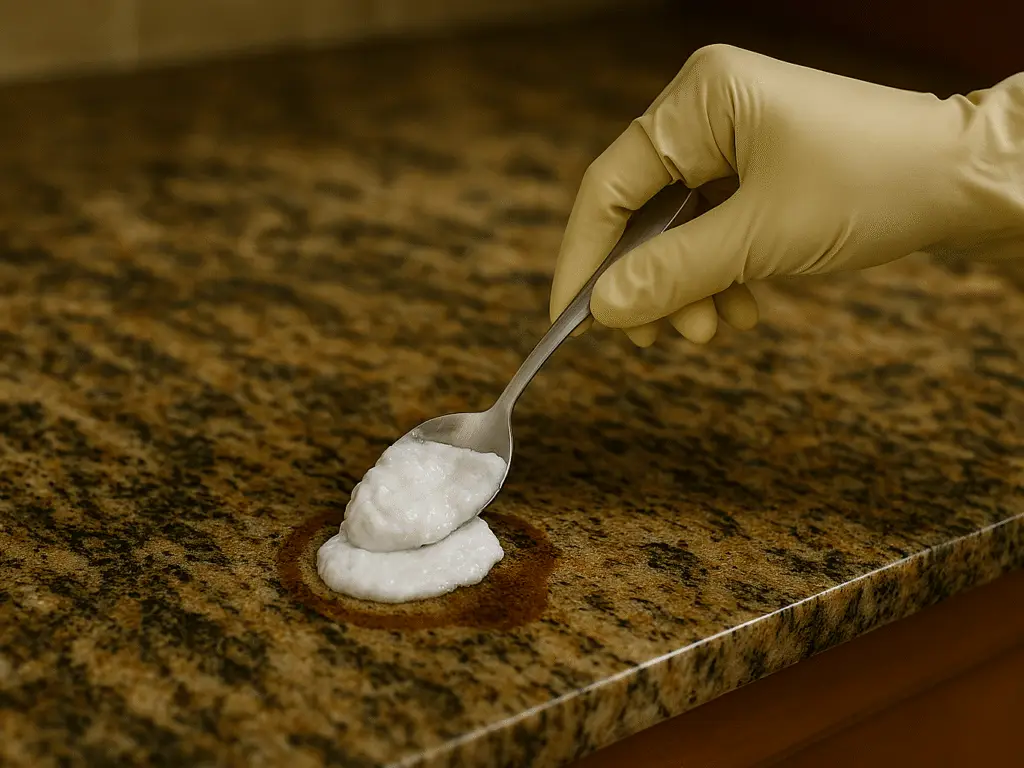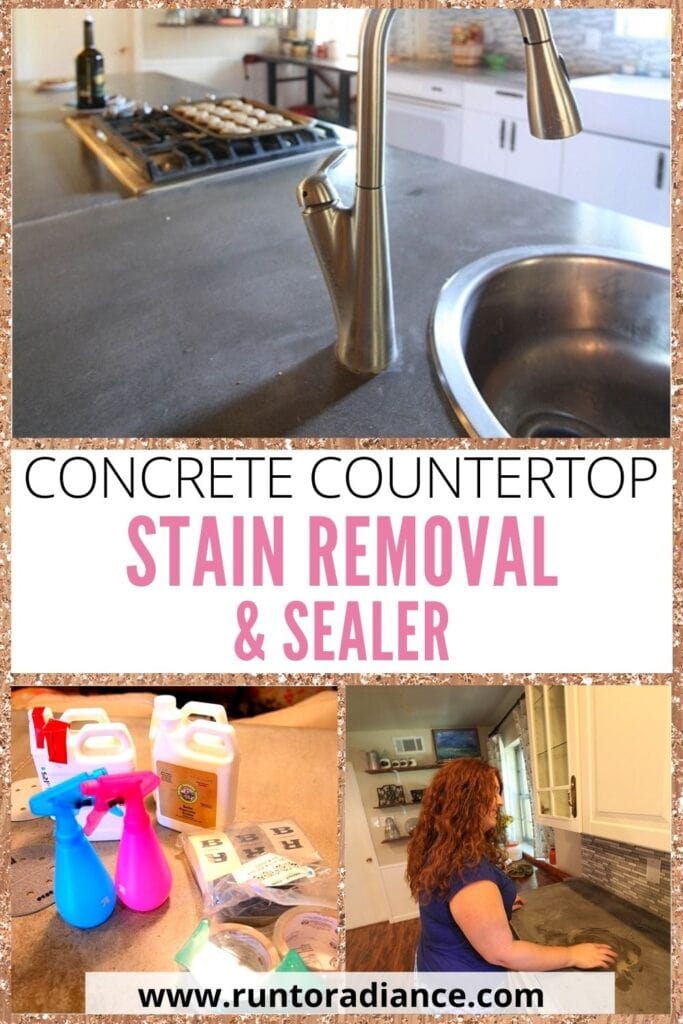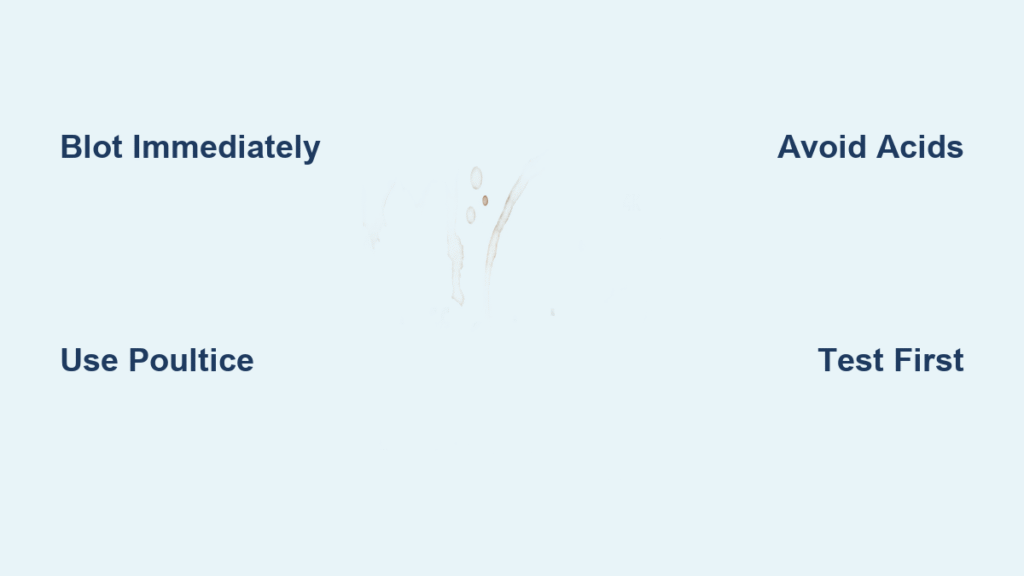That moment when your morning mug slips and leaves a stubborn brown ring on your countertop? You’re not alone—85% of coffee drinkers have battled this exact scenario. Whether it’s a fresh drip or a dried stain that’s been haunting your kitchen for weeks, how to remove coffee stains from kitchen counter surfaces requires precise methods tailored to your countertop material. Using the wrong cleaner can etch marble, dull quartz, or permanently discolor cement. This guide delivers immediate solutions for every surface type, backed by professional techniques that pull even decade-old stains from deep within porous materials. Skip the guesswork and save your counters from irreversible damage.
Spot Your Countertop Type in 60 Seconds (Before You Clean)
Grab your phone flashlight and inspect a less visible area near the sink. Your cleaning strategy hinges entirely on identifying your surface correctly—mistakes here cause more damage than the stain itself. Run your fingernail gently across the spot: natural stone feels cool and slightly gritty, quartz has a uniform sheen with no visible pores, laminate shows printed patterns under close inspection, and cement feels rough with subtle color variations. When in doubt, consult your home records or check manufacturer labels under cabinets—never proceed without confirmation.
Why Material Matters for Coffee Stain Removal
Coffee creates tannin stains that bind aggressively to porous surfaces. Granite with microscopic cracks absorbs coffee within 30 seconds, while non-porous quartz repels it entirely—until scratches compromise its surface. Using vinegar on marble? That acidic reaction creates permanent etching worse than the original stain. Your first move must be material identification to avoid costly errors.
Rescue Granite Counters From Coffee Rings Without Etching

Granite’s natural fissures trap coffee instantly, but proper technique prevents permanent damage. Skip abrasive scrubbing—this grinds particles deeper into the stone. Your success depends on immediate action and avoiding acidic cleaners at all costs.
Blot, Don’t Rub: The 30-Second Granite Rescue
When coffee hits, press a clean microfiber cloth straight down for 15 seconds—never slide it. This lifts surface liquid before it penetrates. Follow immediately with a damp cloth dipped in pH-neutral stone cleaner (like diluted dish soap), wiping gently in circular motions. Rinse with distilled water on a separate cloth. For stains under 5 minutes old, this method works 90% of the time. Critical warning: Vinegar or lemon juice dissolves granite’s protective sealant within seconds, leaving a dull, etched spot.
Deep Stain Poultice Protocol for Set-In Rings
For stains older than 30 minutes, create a stain-drawing poultice:
1. Mix 3 tablespoons flour with 2 tablespoons 3% hydrogen peroxide to peanut butter consistency
2. Apply a ¼-inch layer extending ½ inch beyond the stain edge
3. Cover tightly with plastic wrap, sealing edges with painter’s tape
4. Wait 12 hours for fresh stains (24+ for dried rings)
5. Peel off plastic when dry—never wipe—and rinse thoroughly
Repeat if needed, but never exceed two applications. Professionals use this exact method for $200+ stain removal services.
Erase Coffee Stains From Quartz Countertops Safely
Quartz’s non-porous surface resists coffee penetration, but dried spills can bond to microscopic scratches. Avoid bleach or acetone—these degrade resin binders over time, causing permanent cloudiness. Your solution must balance effectiveness with material safety.
The 5-Minute Quartz Stain Vanisher
For fresh spills (under 1 hour), dampen a microfiber cloth with warm water and 2 drops of dish soap. Wipe in straight lines (not circles) for 30 seconds, then rinse immediately with a water-dampened cloth. No scrubbing needed—quartz requires zero abrasion. This handles 95% of coffee incidents if done promptly.
Baking Soda Paste for Stubborn Quartz Stains
When soap fails, mix 3 parts baking soda with 1 part water into a thick paste. Apply only to the stained area (avoiding grout lines), let sit for exactly 8 minutes, then gently wipe with a soft cloth. Never exceed 10 minutes—prolonged contact risks resin damage. Rinse thoroughly and buff dry with a clean microfiber towel.
Laminate Countertop Coffee Stain Eraser
Laminate’s plastic coating resists stains initially, but coffee seeps into scratches or burns over time. Aggressive scrubbing removes the decorative layer permanently. Your approach must prioritize surface preservation over speed.
Microfiber Magic for Fresh Laminate Spills
Blot immediately with a dry microfiber cloth using downward pressure (not rubbing). Mix 1 cup warm water with 1 teaspoon Castile soap, dip a soft cloth, and wipe the area in slow, straight motions. Rinse with a water-dampened cloth within 60 seconds. For best results, follow with a dry microfiber buff using light pressure—this prevents water spots.
Baking Soda Power Clean Without Scratches
Combine ¼ cup baking soda with 2 tablespoons dish soap to form a spreadable paste. Apply only to stained areas with a plastic putty knife (never metal), let sit 7 minutes max, then wipe gently with a microfiber cloth dampened with warm water. Pro tip: Add a drop of olive oil to your final rinse cloth—this restores laminate’s subtle sheen without residue.
White Cement Countertop Coffee Stain Protocol

Cement’s high porosity means coffee penetrates within seconds, especially on white surfaces. Hydrogen peroxide is your most effective ally but requires precise timing to avoid color shifts. Always work through these methods sequentially.
Step-by-Step Cement Stain Removal
- Blot immediately with dry paper towels (no rubbing)
- Apply baking soda paste (3:1 ratio with water) for exactly 12 minutes
- Rinse thoroughly with cool water
- For persistent stains, use equal parts white vinegar and water for 8 minutes
- Final attack: Dab 3% hydrogen peroxide directly onto stain for 10 minutes
Critical warning: Hydrogen peroxide left beyond 15 minutes permanently lightens white cement. Always test in a hidden spot first—like behind the faucet base.
Professional Poultice Method for Deep Stains
When home remedies fail, replicate stone restoration pros’ #1 technique. This draws stains from ¼-inch deep in granite or cement using capillary action—no harsh chemicals required.
DIY Poultice Mastery in 4 Steps
- Mix correctly: Flour + hydrogen peroxide (for coffee) or dish soap (for oily stains) to creamy consistency
- Apply strategically: Spread ¼-inch thick layer ½ inch beyond stain edges using plastic knife
- Seal perfectly: Cover with plastic wrap, tape all edges to prevent evaporation
- Time precisely: 12 hours for stains under 1 week old; 24+ hours for older rings
Remove plastic only when completely dry—peeling too early smears the stain. Professionals charge $150+ for this exact process.
Coffee Stain Prevention Tactics That Stick
Stop playing stain defense with these proactive measures. Implement these habits to eliminate 90% of coffee counter disasters before they happen.
The 30-Second Spill Response System
Keep microfiber cloths within arm’s reach of all coffee zones. When spills occur, press down firmly for 15 seconds (don’t wipe!), then follow with a damp cloth within 30 seconds total. This window prevents penetration on all surfaces except unsealed cement.
Material-Specific Protection Upgrades
- Granite/marble: Apply sealant every 12 months—test by sprinkling water; if it beads, you’re protected
- Quartz: Place silicone coasters under mugs (prevents micro-scratches)
- Laminate: Use cutting boards religiously—knife nicks create stain traps
- Cement: Reapply concrete sealer every 6 months near coffee stations
When to Call Countertop Restoration Pros
DIY efforts fail when you see these red flags. Don’t risk further damage—pros fix these daily with industrial tools.
Professional Help Triggers
- Three failed attempts using correct material methods
- Etching marks (dull spots) around the stain from previous cleaning
- Stains larger than a credit card that won’t lift
- Uncertainty about your countertop type—guessing risks $500+ damage
Professionals use deep-extraction poultices and color-matching dyes that pull stains invisible to the naked eye. Most coffee stain repairs cost $75-$200—far less than countertop replacement.
Quick Reference: Coffee Stain Removal Cheat Sheet
| Countertop | First Action | Second Option | Never Use |
|---|---|---|---|
| Granite | Blot + pH-neutral soap | Flour/H₂O₂ poultice | Vinegar, lemon, bleach |
| Marble | Blot + stone cleaner | Professional poultice | Any acid, abrasive pads |
| Quartz | Soap + water wipe | Baking soda paste (8 min max) | Nail polish remover, steel wool |
| Laminate | Microfiber + Castile soap | Baking soda/soap paste | Ammonia, rough sponges |
| Cement | Baking soda paste (12 min) | Vinegar solution (8 min) | Undiluted acids, long H₂O₂ |
Final Coffee Stain Success Checklist
Start with the gentlest method for your material and escalate only if needed. Always test cleaners behind the faucet first—what works on one granite slab may damage another due to varying sealants. For stains older than 48 hours, combine poultice treatments with patience: deep stains often require 2-3 applications spaced 48 hours apart. Most importantly, seal natural stone annually—this single habit prevents 95% of permanent coffee damage. Your morning brew shouldn’t leave a permanent mark; with these targeted techniques, pristine counters are just minutes away.



